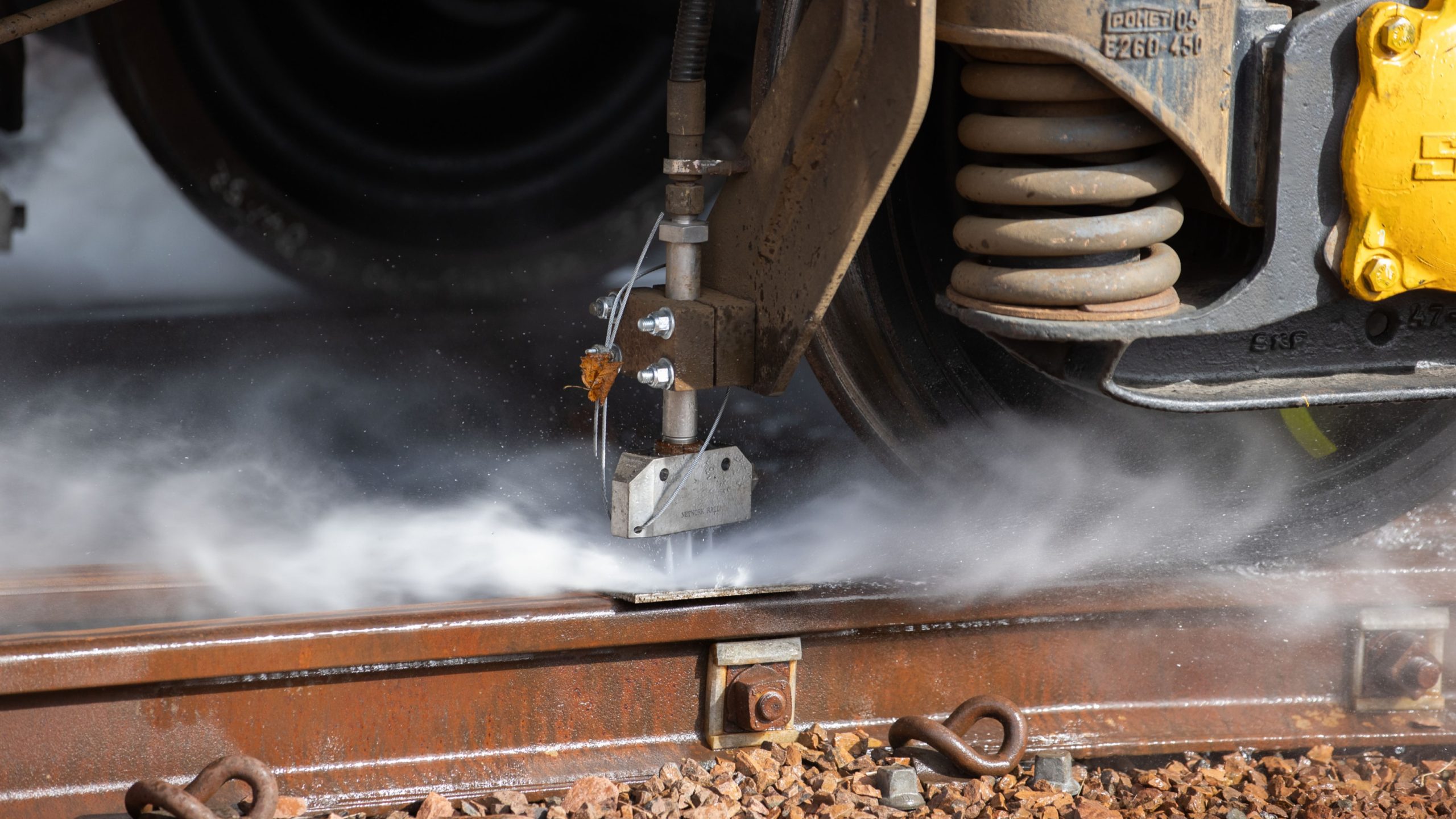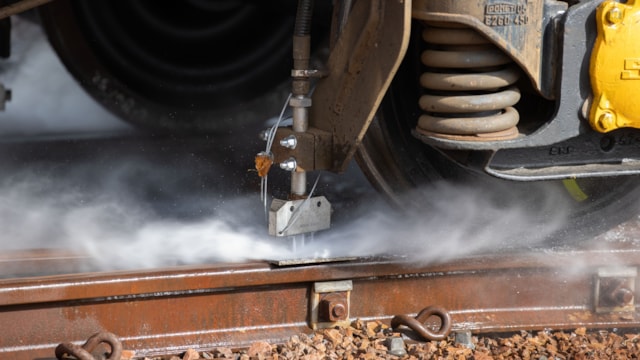Network Rail Scotland invests over £7 million to keep trains on time this autumn


Monday 2 Sep 2024
Network Rail Scotland invests over GBP7 million to keep trains on time this autumn
- Region & Route:
- Scotland's Railway: Scotland[1]
Drone technology will be deployed alongside seven specialist 'leaf busting' trains this autumn, to help keep passenger and freight services running on time. Eighteen leaf-fall teams will work around the clock to remove fallen leaves - the railway's equivalent of black ice on the roads, to help cut delays during this challenging period. Leaves on the line can cause trains to lose their grip on the rails which means braking distances are increased.
If this happens, it can cause trains to overshoot signals or platforms and affect signalling systems - making it harder for signallers to track where trains are. To combat this, specialist rail-head treatment trains (RHTTs) and multi-purpose vehicles (MPVs) will cover more miles than ever before, serving the newly opened Levenmouth Rail Link for the first time. These trains use high-pressure water jets to clean the rails before coating them with a sandy gel that sticks to them, helping improve train wheels' grip.
Rapid response teams will trial the use of drones to inspect the rails for leaf contamination from above, without staff having to stop trains to access the track. Between September 16 and December 6, more than 81,000 miles of track will be treated by this specialist fleet while teams of engineers will target leaf-fall black spots. The leaf-fall teams will also continue the use of 'hydrophobic' sand which sticks to the rails, giving trains more traction in slippery conditions.
Network Rail will also equip ScotRail's Class 334 fleet with the same sand, trialling its effect on several routes, including between Helensburgh Central and Edinburgh Waverley.
Ross Moran, route director at Network Rail Scotland, said: "It's exciting to see our seven leaf-busting trains take to the rails in mid-September, part of our GBP7 million investment to improve performance by running more trains on time. To do this, we'll be working as one team with colleagues across Scotland's Railway to keep passengers and freight moving this autumn. "Leaves on the line are dangerous, affecting trains like black ice affects road vehicles.
To prepare for this, we're using tried and tested techniques, as well as some innovative technology, such as drone inspections and hydrophobic sand, that will help break down leaves and improve traction for trains."
ScotRail will make changes during autumn to make its timetable more resilient against the adverse conditions that the change in weather can bring. Most of these will be minor, with changes to calling patterns and arrival times on a very small number of services. The majority of routes will retain the same schedule that's in place just now.
Mark Ilderton, ScotRail Service Delivery Director, said: "We know few things frustrate customers more than when their train is delayed because of leaves on the line, but the reality is that this can lead to disruption across the network.
"To help minimise the impact the weather has on our customers this autumn, we're making some minor changes to our timetable to ensure its as resilient as possible. "We've also been working round the clock to prepare our trains and our stations for the change in weather, while working with colleagues at Network Rail to keep rails and train wheels free of contamination caused by crushed leaves. "Throughout autumn, we'll make sure customers are kept up to date with accurate information about their journeys."
Notes to Editors
To supplement the seven leaf-busting trains, Network Rail will use two 'SandRovers' on the West Highland Line and between Balloch and Dalreoch.
These modified Land Rovers are road-rail vehicles which can clean and treat rails. Drones will be used proactively to inspect tracks and look for overgrown vegetation, especially in high-risk areas. Network Rail has also leased several portable tribometers from Rivelin Rail to trial across Scotland's Railway.
These are used to take accurate measurements of railhead conditions during autumn - how much grip is available for trains. These are small, portable and intuitive to operate, with measurements taken in under 60 seconds.
About Network Rail
We own, operate and develop Britain's railway infrastructure; that's 20,000 miles of track[2], 30,000 bridges, tunnels and viaducts[3] and the thousands of signals[4], level crossings and stations. We run 20 of the UK's largest stations[5] while all the others, over 2,500, are run by the country's train operating companies[6].
Usually, there are almost five million journeys made in the UK and over 600 freight trains run on the network. People depend on Britain's railway for their daily commute, to visit friends and loved ones and to get them home safe every day. Our role is to deliver a safe and reliable railway[7], so we carefully manage and deliver thousands of projects every year that form part of the multi-billion pound Railway Upgrade Plan[8], to grow and expand the nation's railway network to respond to the tremendous growth and demand the railway has experienced - a doubling of passenger journeys over the past 20 years.
Follow us on Twitter: @networkrail
Visit our online newsroom: www.networkrailmediacentre.co.uk[9][10]
References
- ^ Scotland's Railway: Scotland (www.networkrailmediacentre.co.uk)
- ^ track (www.networkrail.co.uk)
- ^ bridges, tunnels and viaducts (www.networkrail.co.uk)
- ^ signals (www.networkrail.co.uk)
- ^ stations (www.networkrail.co.uk)
- ^ train operating companies (www.networkrail.co.uk)
- ^ a safe and reliable railway (www.networkrail.co.uk)
- ^ multi-billion pound Railway Upgrade Plan (www.networkrail.co.uk)
- ^ @networkrail (twitter.com)
- ^ http://www.networkrailmediacentre.co.uk/ (www.networkrailmediacentre.co.uk)